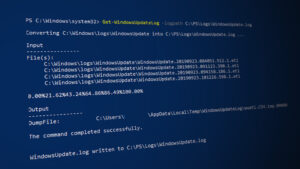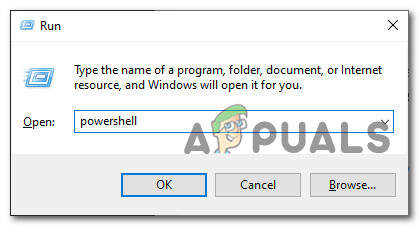How to Find Windows Update Logs in Windows 10?
Some Windows 10 users are attempting to view the Windows 10 update log after a failed update/upgrade but have no idea where to look. On Windows 10, the Update logs are now generated using ETW (Event Tracing for Windows) as opposed to Windows 8.1 and Windows 10.

Because Windows 10 uses event tracing for the generated update logs, you will need to do go through some workarounds in order to be able to view the Windows Update logs.
Since there are a couple of ways to go around making this happen, we have listed every potential method of finding & viewing the Update Logs on Windows 10 below:
- Converting Event Tracing events to a WindowsUpdate log.
- Viewing the full Windows Update log using the Event Viewer utility.
Feel free the method that you feel most comfortable with:
Method 1: Converting the ETW traces in Powershell
If you want an easy way to store and view the Windows Update log files in an easy-to-read format, the best way to do it is to run a Powershell command in an elevated command prompt that successfully converts all ETW (Event Tracing for Windows) into a readable WindowsUpdate.log.
This should be your preferred approach if you need to get a broad overview of all your Windows Update logs instead of looking for specific logs.
If this scenario is applicable, follow the instructions below to open up an elevated Powershell menu and run a command that successfully converts any ETW traces into a readable WindowsUpdate.log:
- Press Windows key + R to open up a Run dialog box. Next, type ‘powershell’ inside the text box and press Ctrl + Shift + Enter to open up an elevated Powershell window. When you’re prompted by the UAC (User Account Control), click Yes to grant admin access.

Accessing the PowerShell window - Once you’re inside the elevated PowerShell window, type the following command and press Enter to essentially convert every event tracing event related to your Windows update log into WindowsUpdate.log file:
Get-WindowsUpdateLog
- After you run the command, wait patiently as the operation might take a couple of dozen seconds.
- Once the operation is complete, navigate to your desktop and look for the WindowsUpdateLog file that was just created.

Converting ETW’s to a Windows Update Log Note: You can either open this new file with the classic Notepad app or you can use a superior text viewer like Notepad++.
Important: Keep in mind that this is only a static log file that will NOT update itself even if new errors are logged. If you want the updated list, you need to run the command above again.
If this didn’t work for you or you’re looking for a different method of viewing the error log of Windows Update, move down to the next potential fix below.
Method 2: Read the Windows Update logs via Event Viewer
If you’re looking to investigate specific Windows Update error logs, the better approach is to use the Event Viewer utility to view every Operational entry under WindowsUpdateClient.
This method is not recommended if you’re looking to take your logs outside Event Viewer since there’s no bulk export feature, but it’s perfect for investigating and pinpointing specific events.
If you’re comfortable with reading the Windows Update logs via Event Viewer, follow the instructions below:
- Press Windows key + R to open up a Run dialog box. Next, type ‘eventvwr.msc’ inside the text box and press Enter to open up the Event Viewer utility. If you’re prompted by the UAC (User Account Control), click Yes to grant admin access.

Accessing the Event Viewer Utility via a Run box - Once you’re inside the Event Viewer utility, use the menu on the left to navigate to the following location:
Applications and Service Logs\Microsoft\Windows\WindowsUpdateClient
- After you arrive at the correct location, select the Operational tab, then move down to the center pane to view a list of every Windows Update error log.





